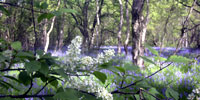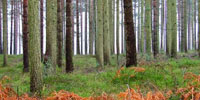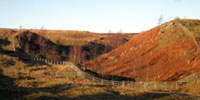Woodland and Forestry
Woodland are highly valued features of the Durham countryside, and make an enormous contribution to the character and beauty of the landscape as well as to its biodiversity and historical interest.
Native woods are composed of native trees and shrubs. They include ancient semi-natural woodlands (ASNW), secondary semi-natural woodlands and planted ancient woodland sites (PAWS). The plant communities found in these woodlands vary across the county, reflecting changes in geology, soils, climate and the influence of human activity. Some woodland types are closely associated with one landscape type or natural area for example juniper woods are restricted to the North Pennines whilst Yew woods are similarly restricted to the East Durham Limestone Plateau; others are more widespread in their distribution and show little change in their composition over a broad geographical range. Some, like wet woodlands, are associated with very localised conditions which may occur across a range of landscape types.
Many of the county’s woodlands however are plantations. They vary from large forests and plantations established for timber production in the 19th and 20th centuries to smaller mixed or broadleaved woodlands planted for shelter or farm timber, or as part of designed parklands and estates. Older planted woods have in some cases developed characteristics of semi-natural woodland.
The following sections give information on native woodands found in County Durham, Woodland Management, Woodland Planting and an overview of the woodlands found in each of the County Character Areas. Alternatively the Woodland and Forestry Guidelines can be downloaded as below.
Landscape Guidelines Woodland and Forestry 2009 (PDF, 1Mb)
Further Information
- For further information and the distribution of Woodland and Forestry in County Durham visit the Landscape Chraracter pages.
- Woodland and Forestry




